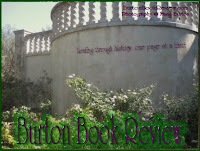Sunday Salon: Tudor Mania Results!
BurtonReview
Saturday, July 31, 2010

It's been a very long time since I've composed a Sunday Salon post, but it's for good reason. I've been busy with work, reading, the outdoors, the family, the house, swimming.. etc.
But I wanted to take this chance to announce the end of The Tudor Mania Challenge that was posted here at The Burton Review.
Thanks goes out to those who participated in the challenge and posted their review links to the challenge post on the McLinky tool. The McLinky tool will close at midnight Saturday pm, so if you have a recent Tudor Review that you would like to submit, do it soon!
Hopefully it will generate your site some additional traffic as well. Since I have no internet at home right now, I am composing this post (from work, sssh!!) a day ahead of the scheduled end of the challenge. So if anyone enters another Tudor Review on Friday afternoon or Saturday, I will adjust the following tallies as needed.
The preliminary results are:
The Burton Review: 6 books
Historical-fiction.com: 4 books
Living and Loving in California: 4 books
Lady Gwyn's Kingdom: 3 books
Bippity Boppity Books: 3 books
Book Addiction: 3 books
Enchanted By Josephine: 1 book
Stiletto Storytime: 1 book
Historically Obsessed: 1 book
As of Friday, the winner is ME! LOL! YAY. Well, okay, the next winners are Arleigh (Historical-fiction.com) and Cortney (Living and Loving in California)! Read Arleigh's Wrap up post here.
The purpose of the challenge was to get ME to read more Tudor books from my huge to-be-read pile. My main love of books stems from this Tudor obsession of mine, yet I have let myself get distracted by all sorts of other awesome books (and the huge ARC pile!). I am glad that I was able to read more Tudor themed reads this summer but still not as many as I wish I had.
My favorite out of the six Tudor books I had read for this challenge is Secrets of The Tudor Court by D.L. Bogdan. I really enjoyed the point of view of the Tudor intrigue told from Mary Howard, daughter of the seemingly vicious Thomas Howard, Duke of Norfolk. I look forward to more books from this author.
If there are no further entries of submitted reviews this Friday the 30th and Saturday the 31st, the results posted above will be made final and I will contact Arleigh and Cortney to discuss the results and the prize!
Recently, I've reviewed His Last Letter by Jeane Westin, here, as my last entry for the challenge and there is also the Book giveaway going on until August 14th where there is an intriguing interview. That review brought my own review tally of the year 2010 to a big number of 42 reviews published! You can see a complete list of all my reviews here.
Coming up for August, I have great book giveaways in store for you, such as the new release by Philippa Gregory, The Red Queen, and also for The Secret Eleanor by Cecelia Holland for which I have interviewed the author. Stay tuned!
August will also be a month-long event at Austenprose.com honoring Georgette Heyer. It will feature giveaways, reviews and interviews!!
Other than that, I still have a large to-review pile, but I do hope to get past those so that I can participate in other reading challenges and read some of my favorite authors again such as Jean Plaidy aka Victoria Holt, and Georgette Heyer. And I want to focus a bit more on my real life, and less blogging. I will always do reviews, but I will not be online as much. I do follow many blogs via the Google reader, so I will be reading your posts there. My oldest is starting a new school at the end of August and I am so nervous for her!! It's a great school, much better than her previous one, and I hope that she continues to get A's and that she makes some great friends. And I hope that my son will be more receptive to the failed potty training adventures. What a boy he is. {The "Oliver, let's go potty" phrase returns one of two answers: "I already went." "I don't waaaannnnnnt to!" each accompanied by the irritating melodramatic-the-sky-is-falling-whine.}
Happy reading to my bookish friends, and I hope that everyone has a great finish to their summers!!




































